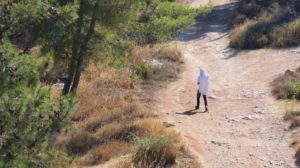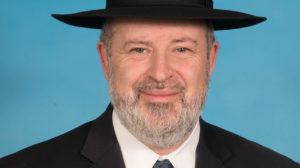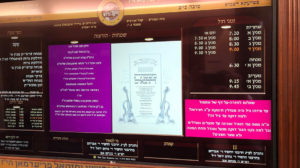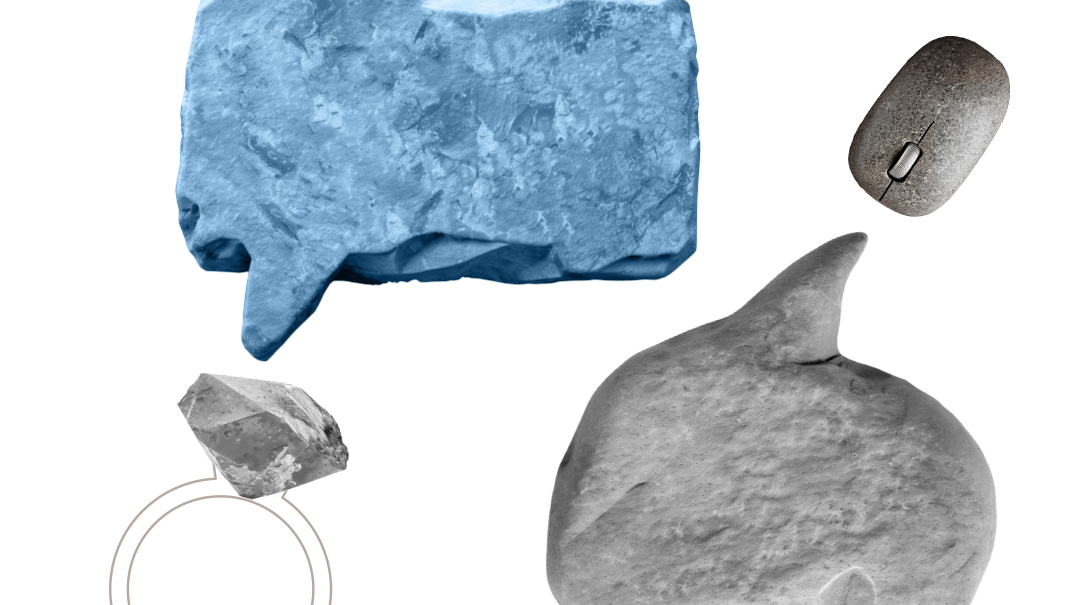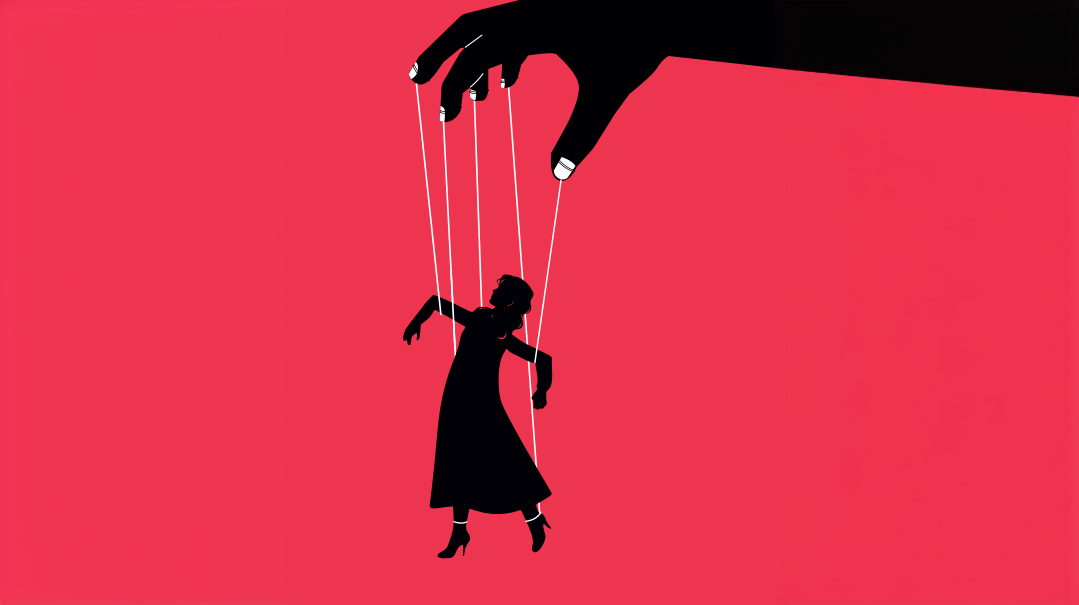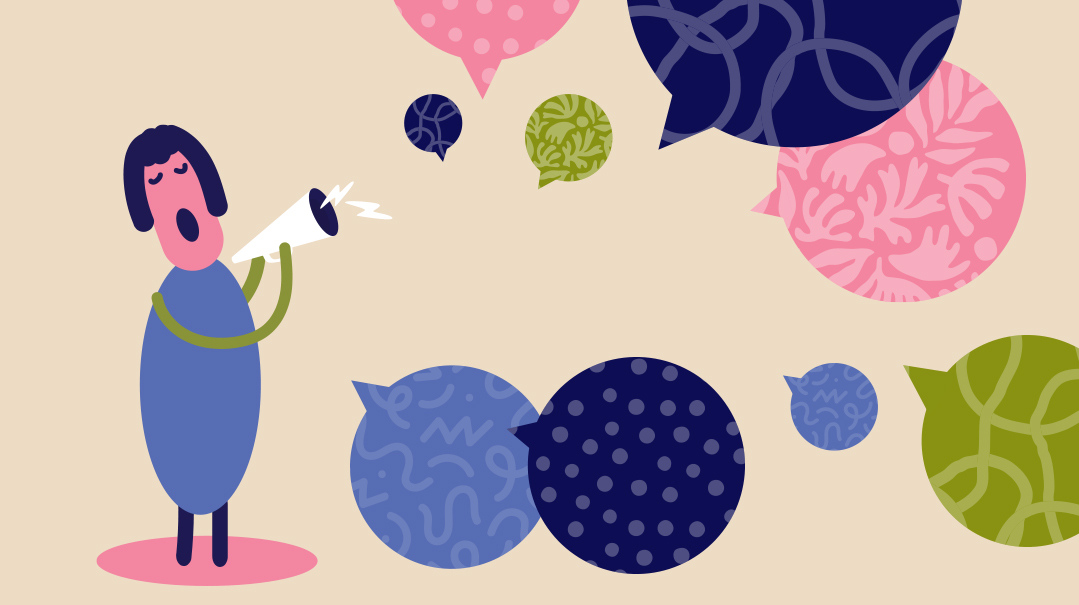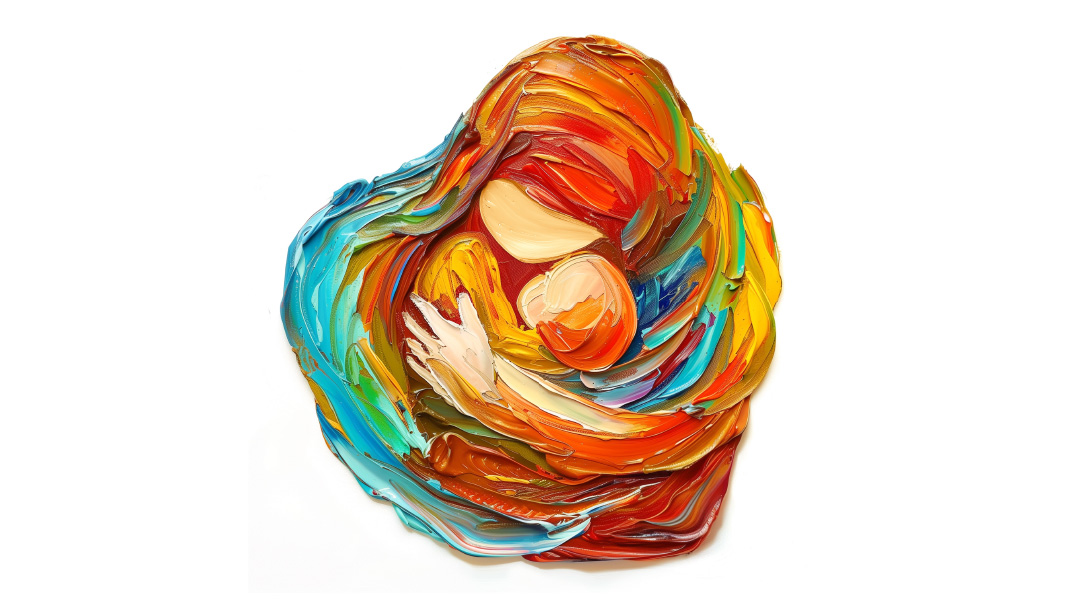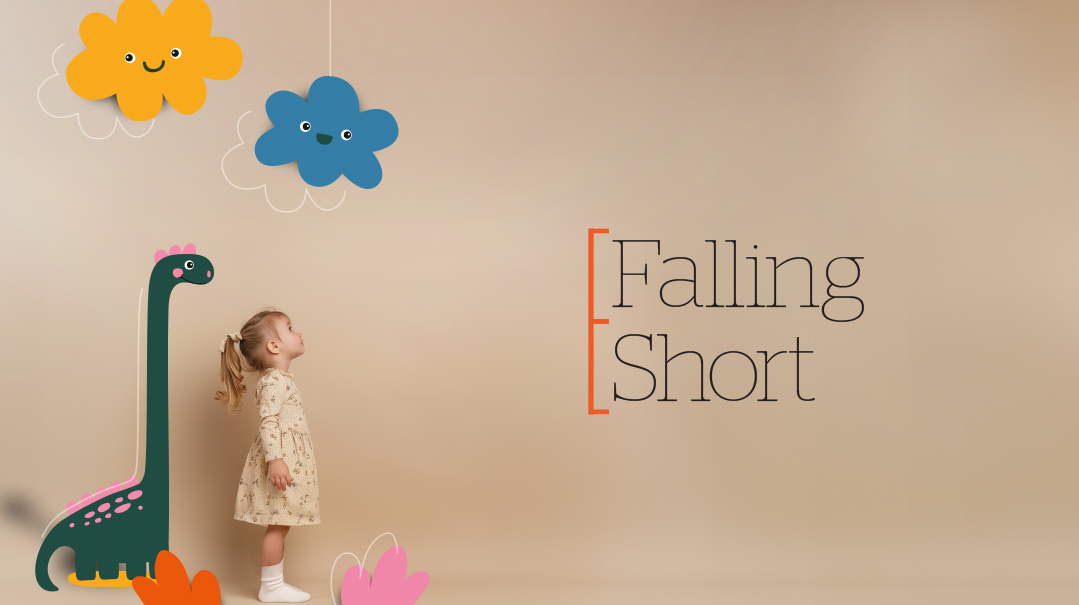The Color of Truth

An assimilated Jew, she discovered light and life in chassidus
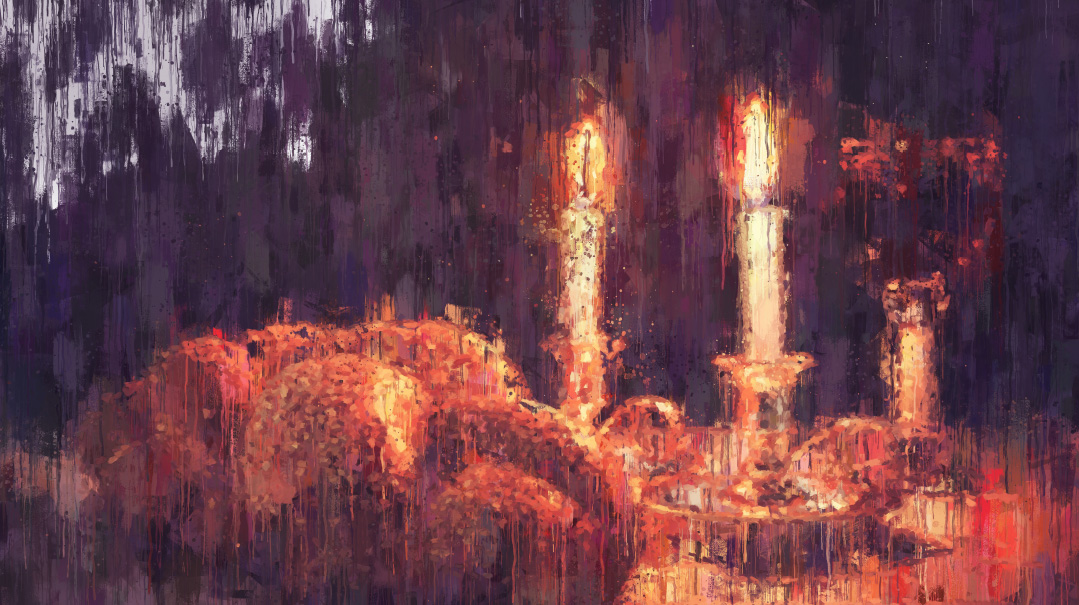
As told to Rivka Streicher
Igrew up with a Jewish mother and non-Jewish father in New York City, a mere eight miles from where my husband, Akiva, was growing up in Williamsburg.
Back then, I’d never heard of Williamsburg or chassidim. Worlds separated us. We were the free, the cultured; every shining opportunity beckoning like the lights on the Hudson. They were primitive, extreme. Statistically, I should never have met one of them, married one of them, become one of them…
My family was traditional. We’d eat a Shabbat dinner and then watch TV. We’d have a grand Pesach Seder and then all drive home. My mom’s family was half-European, half- Spanish, and we had that Spanish intensity. My parents were hyper-focused on performance. They valued academia, we had to reach the top, go out there, and make careers for ourselves.
When I was 11, my mom was diagnosed with a brain tumor, and we moved to New Jersey. For high school I went to a far left Modern Orthodox school. There was a spectrum of observances and many of the teachers were from nearby Lakewood. I enjoyed school and made friends with girls who were more frum. I also became close with one of the teachers and sometimes went to her home for Shabbosim.
I’d developed a relationship with Hashem from a young age; my mom had been in a coma after her first brain surgery, and life was unravelling around me. The more it came apart, the more I got in touch with Him. When my mother finally came out of her coma, she went through extensive rehab. I lived with my grandparents, and at night, after Shema, I’d daven that I could live with my mom again.
Later, Mom needed another surgery, after which she suffered a stroke. As a teen, I’d routinely help her get dressed, do the laundry. As my role changed from daughter to caregiver, I felt Hashem there, with me in that pain, calling me to question my role in life, to find a Higher Source. By the time I went to college to get my degree in occupational therapy, I was keeping a lot more mitzvos, but was still wearing pants and eating out at (vegetarian) non-kosher places.
Rocketing and Rocky
I was looking for Him, inching my way closer, when I met a Jewish guy, Jacob, on my college program. We were both growing religiously and had a lot of discussions about Judaism and life. We got into a relationship and thought we might be right for each other.
Jacob was in an intense place, taking on more and more. He would often point out when I was doing something wrong, and it was hard to separate the hurt I felt from his constant criticism of my halachic observance with the halachah itself. Not one to take on things without understanding them, I read and researched vociferously about the topics he was bringing up. I had to understand in order to have a feel for the mitzvos and halachos. Although he wasn’t helping me in a supportive way, my observance rocketed during that period.
Jacob doubted I was truly Jewish because my relatives speak and look Spanish. I’d mentioned to him in passing that my Grandma had once told me we were descended from Marranos. Before she’d married, she underwent giyur l’chumrah, but even so, Jacob made me doubt my Jewishness.
I was in a cycle in which I was constantly made to feel like I was at fault. I kept trying to call off our relationship, but every time Jacob would somehow convince me to stay with him. He was charismatic, good looking and intelligent, and despite my wariness and unease, we were emotionally invested in each other. After six months of dating, we got engaged.
Unfortunately, only after we got engaged did we talk about hashkafah in a practical, not just theoretical, way with whom we would align, where we’d live, etc. Things got messy. We realized we weren’t in the same place.
One day, he told me he had OCD. I was shocked, but I couldn’t deny that it made sense, since he had a lot of obsessions when it came to keeping halachah. I wanted to pull out then and there, but there was a part of me that really felt for him, and didn’t want to leave him just when he’d opened up.
Finally, a therapist helped me find my voice and inner strength, and coached me through to the end of this toxic relationship.
Finding My Why
In this difficult time, there was a ray of light. Jacob had shaken me up with regards to my family’s roots, so I spoke to a cousin who was also becoming frum about our shared family history (our mothers are sisters). He said that even though Rav Chaim Pinchas Scheinberg ztz”l had told him he was 100 percent Jewish, as my grandmother had done a giyur l‘chumrah before her marriage, he’d wanted to do one as well. I took his cue and underwent giyur l’chumrah, ironically, the same week as I broke off the engagement. After doing that, I felt spiritually invigorated. It was my own “naaseh v’nishma.”
By this time, I was doing a grad program and living in Crown Heights, and for most Shabbosim I’d go to this cousin and his family in Lakewood. He’d been on an arduous journey himself, and he could understand where I was coming from. He paved the way for me.
It was great to have him to talk to, because sometimes frum people are so accustomed to doing what they’re doing, they haven’t necessarily thought about the why of everything.
I joined a Chabad shul in Crown Heights that was really welcoming and fun, full of young people. I made a friend at the shul. Her home, when I visited it, was dominated by a bookcase. She pointed out the collection of Rabbi Arush’s books (translated by Rabbi Lazer Brody). I took one after the other. A book on anxiety, written by Rabbi Brody, really spoke to me. Breslov spoke to me.
I starting learning Tanya and chassidic mussar sefarim, and realized that, in a way, chassidus is psychology, explaining how to understand yourself and understand others. I was fascinated by the works of chassidic giants like the Piacetzner Rebbe and the Sfas Emes. The big click was emunah.
I already had a deep relationship with Hashem. While I’m a thinker and analytical, I liked the chassidic world’s focus on the emotional aspect of avodas Hashem.
I didn’t yet understand the nuances of chassidic life, but I loved farbrengens and the singing and the fact they were happy to have obvious peyos, wear their tzitzis out, and don a shtreimel.
Growth in the Holy Land
My grad program finished, and I had no clear direction other than that I desperately needed to heal from the Jacob saga, so I went to Israel to study in a seminary. I was keeping kosher, tzniyus, and Shabbos. But I needed to see more beauty in Judaism, particularly in terms of bein adam l’chaveiro.
The seminary I went to was geared to intellectuals. We were a group of college students who didn’t just go for the fluff and sparkle of feel-good Judaism, but wanted to delve into the texts and see things for real. I learned by example about relationships and women’s role in Judaism from the teachers in the seminary. I also enjoyed classes related to female figures in the Torah.
I’d brought some of my Breslov books, but nothing like that was spoken about in seminary. One day, I just googled Breslov head office and found a phone number. I called and asked if I could come by.
Two days later, I was able to meet with one of the rabbis. I told him that the Breslov books had immeasurably impacted my world. Suddenly my whole story came tumbling out.
“I don’t know what to do now,” I told the rabbi when I was done. “I don’t know what to focus on. I feel like I’m not good enough, not tzniyus enough.”
The rabbi looked at me in surprise; I was dressed tzniyusdig from head to toe. Jacob’s negative voice was still eating me up.
“Hey, I know a guy that I think would be great for you,” the rabbi said to me. “I’m close to his family. Would you want to meet him?”
I shook my head. “I don’t believe in relationships anymore,” I said.
“Is it okay if I give him your number?”
I couldn’t say no. Not to a Breslov rabbi.
That night, Akiva called. “If my rabbi thinks so highly of someone, I’d love to get to know them,” he said.
I laughed.
We spoke for an hour, and somehow the conversation meandered to mediation. We were both into Rabbi Aryeh Kaplan’s book on how to mediate Jewishly.
“Do you want to meet?” Akiva asked.
“No. I’m not ready.”
“Ok, so you have my number…”
He let me have my space. Apparently, that was all I needed. I found myself calling him the next day. “Let’s meet. Just for today.”
I enjoyed talking to Akiva, and felt a certain calm in his presence. I knew he came from a chassidish background, but he didn’t look overtly chassidish. At that point, I would’ve run away if he would’ve. Some days he wore jeans; other days, slacks. He’d taken a long, rocky road off the derech and was now coming back. He was very connected to a chassidish rebbe in Jerusalem.
Much as I liked Akiva, I wasn’t ready to marry him. He spoke perfect English, but with a Yiddish twang that felt like a big deal. It reminded me, in every sentence, that he was coming from a very different world, that he’d once been fully-fledged chassidish. It came to a point that I liked everything else about him, but couldn’t get over his accent.
From the get-go, Akiva was clear that he was dating with a purpose. His rebbe advised him to see right away if our relationship could go somewhere. If not, he said, the yetzer hara would slither in and it would get much more difficult to make a decision. Because of my difficulty breaking up with Jacob, what his rebbe advised him resonated deeply. I realized, viscerally, that the Torah was there to protect me.
Foundation of Truth
I married Akiva because of the emes we were both seeking. Although we came from different worlds, we had a lot in common in terms of our search for that emes.
When my veil was lifted after the chuppah, I was blindsided by shtreimels — Akiva’s, which we agreed he’d wear just for the night — and tens of others in the celebrating crowd. Was this really my wedding?
As I got to know Akiva’s family, there were so many pieces that appealed to me. I was moved by Akiva’s mother’s unconditional love for him. No matter where he was in life, their door was open. Her love was a major part of his ability to return.
But there were also little things that really shocked me. Oh my goodness, such thick stockings? Seams? Do they really shave their heads? That chitzoniyus was a massive barrier.
There were other nuances I found startling. It bothered me how they referred to their cleaning help as the “goyta.” I went to college and did assignments with people who’d clean houses for extra money. It felt the society had this huge negative focus on “goyim.” Even though I wasn’t connected to my non-Jewish father, it hurt.
As newlyweds, we lived in the Mekor Chaim neighborhood in Yerushalyim. It was a stage of exploration where we got to be ourselves. We found a shul with amazing Carlebach singing. It was good for a very free-spirited start, but we soon realized we needed to move on.
We chose Nachlaot, with its strong Chabad presence. We especially loved the Mayanot shul. There’s a space for women there, all in accordance with halachah. It’s a different world from shuls where the women need to squint through wooden latticework. At that point, I needed that — the familiarity of gender “equality,” and that liberal acceptance of me simply for being a Yid.
We were growing in our observance, and Akiva was the real deal. He’d take on something and begin to keep it seriously, but he never gave me mussar or told me what to do. This was completely different to how Jacob had been. After a while, I’d be like, “You’re doing it? Hey, I wanna do it too.”
At one point, Akiva made a decision that he wasn’t going to watch movies anymore. I was mad. “You didn’t tell me this is where you were going when we were dating!” I said.
He told me he’d decided he didn’t want to be influenced by what’s on TV, in addition to the problems with tzniyus.
My gut reaction was anger because I didn’t want to admit that what he was saying was true. I sat with the feelings for a while, and then Hashem helped me and I was able to see that this was Akiva’s way of protecting our home and marriage.
It wasn’t even as if I was watching much TV. It was just that I couldn’t imagine shutting it out completely. I watched when I needed to, and he didn’t, and it didn’t have to be a blow-up like it would’ve been with Jacob. And slowly, I was able to curb my watching, at my own pace.
Chabad is about being a light for the secular world. But that meant there were many non-frum people who were just starting out on the teshuvah process. The vibe on the street was different from the one inside our home. Every bit of spiritual sensitivity I gained was precious and hard-won, while many of my neighbors and even members of the shul were saying, “This is too intense, too extreme…Do we really have to…” I was trying to distance myself from secularity, and their attitude disturbed me.
On the other hand, aspects of chassidic life I found stifling. My brothers-in-law wouldn’t say hello to me or hold open the door for me. I knew some people who’d come from the secular world and had integrated into communities like Karlin or Toldos Ahron. “In the secular world, there’s so much infidelity,” they’d say to me. “Isn’t it amazing to have this clear divide between the genders?”
A part of me appreciated the dynamic, but I found it too extreme. It took me a while to discover there are chassidic men who would help me put my baby’s carriage under the bus, to find different shades within a world that looked black and white.
The strength of chassidus is in their insularity, but they do such a good job that they can really shut others out. For years I asked my husband: Show me a chassidish home that’s not as strict as my in-laws, take me to chassidish people who would be willing to have me ask questions and be a part of the conversation. For a long time Akiva had nowhere to bring me.
Moving Forward
We had all this identity angst, but the environment in our neighborhood was getting to us. We pushed further right again, and moved across the “border” of Jaffa Street, literally on the edge of the chareidi neighborhood of Mekor Baruch.
We started hosting guests on the occasional Shabbos, and soon, every Shabbos. People liked coming. Akiva would talk Torah and chassidus. But I still had a lot of struggle around being chassidish. While I loved the Torah and the flavor chassidus gave to it, I wondered if there was a place for me within the system.
Akiva’s rebbe is very big on tefillah, and his zemanim aren’t in line with the mainstream. There’s a lot of intensity and a lot of beauty in his kehillah, and I really wanted to be comfortable there. I knew how much it meant to Akiva. This was his place, his rebbe, who didn’t judge him but accepted him where he was at.
He was very connected to his rebbe and was gaining from him and then giving that over to me and to our Shabbos guests. It bothered me that there was no place for women there – his rebbe doesn’t meet with women.
When our son David was born, we had little outside support. We didn’t have the energy to make a pidyon haben, so one of Akiva’s chassidic friends hosted it in his home for us. All I remember is a blur of men in black, and that I was asked to eat in the kitchen. I wanted to run away from my own simchah. I was confused and didn’t know how to find beauty in this stark gender separation, and none of the women I spoke to had answers.
I remember a woman from the community telling me, “Your connection is through your husband.” And although there may be truth to that, she missed the point of what I needed then. I wanted my own connection with the light.
And then I finally realized that the Light is Hashem! I could have endless conversation with Hashem. I opened my Tehillim, my siddur, and spoke to Hashem in my own words. Hashem helped me reciprocate the acceptance Akiva was giving me. To accept his relationship with the Rebbe, to trust the Rebbe, and accept his guidance with regard to our life.
A dear friend of mine suggested we study Miriam Kosman’s Circle, Arrow, and Spiral together. It took us a full year to get through it, which also gave me time to process it. It explains the concept of mashpiah and mekabel, how giving is predominantly the male trait and receiving the female’s trait. That really resonated with the nurturing part of me.
I kept seeing how it fit in with aspects of chassidic lifestyle, like the fact most men went to work while many women stayed home, for example. At first I resented what I saw as limitations for women — even though, ironically, all I wanted was to be a stay-at-home mom, my sense of justice was wounded. The book helped me see it in a different perspective.
Growing as a Family
Mothering David was a beautiful, natural experience. I started to feel our strength as a family unit. All the while, I was still seeking identity and direction.
Then, a couple of years after our marriage, construction was done in the Rebbe’s shul to make the mechitzah one-way glass. I was finally able to see and hear the davening. That first Yom Tov, I felt such an amazing spiritual energy there in shul, and I said to my husband, “I think I finally get it!” My urge to be Yentl dissipated.
I started to fall in love with other elements of the chassidish community. How they live unabashedly and wholeheartedly. The breadth, the width, the emunah Akiva had.
“Why do so many chassidim have businesses?” I once asked him. “Because then you know, in the realest way, that parnassah comes from Hashem,” he answered. “If you go to college and have a 9-5 job, Hashem’s hand is less obvious. Also, the life of a real chassid isn’t geared towards a 9-5. They need more freedom to do their own thing, to invest in their avodah.”
At the same time, Akiva’s way of doing business and managing finances was a culture clash for me, and it took on a greater intensity when I thought about my boys and their future.
Boys, yes! In the next three years we had two more boys. Life was full and beautiful. Sometimes I look at us and can’t believe how far we’ve come in such a short time. In five years, I’d become fully religious, gotten married, and had three kids!
Now that our oldest son, David, needs to go to cheder, my struggles with defining who we are aren’t just for me, but for my children. Akiva is in a completely different place than when we first met, and slowly his outside is starting to reflect the great inner changes.
While part of me is so happy that Akiva is reclaiming chassidus, another part of me cringes at my sons going through the chassidish cheder system. It’s the part of me that was told to go to college, to get a career, to live the American dream.
Akiva, who didn’t get a secular education, set up his own business on Amazon, and then in importing and exporting. It’s all so unpredictable. Sometimes we’re doing well; other times we really have to tighten our belts.
I’ve learned that you can’t think 15 years down the line. You have to deal with today, with where you’re at now. And rely on Hashem to take care of the big picture, for everything. We’ve set up some interviews at chassidish chadarim, and we know we need to look “normal.”
A couple of weeks ago, Akiva decided to take his shtreimel and beketshe out of the closet and try them on. We took a picture and laughed. We’re heading toward fully joining the chassidish world, and the fear is outshined by joy. Akiva started curling his peyos again. It’s funny, because I never would’ve married him looking like that. Still, what was always so clear to me was that however he dressed, he was chassidish inside — and there’s something so beautiful to me in him owning it now.
It’s big, because once upon a time I couldn’t get past the clothing and dress — it really does represent so much. As for myself, I’m keeping the rules, but doing it with color. I wear tights and closed-toe shoes. My tichel is two centimeters lower than it used to be. Still, it’s pink and sequined. I’m still me.
Sometime last year we saw a chassidish couple walking by on Friday night. He looked chassidish. She was wearing a purple outfit, not loud or garish, just tasteful. Her tichel was beautifully tied in a reserved style. I remember her jewelry, her shoes, every detail, because I’d thought how beautiful, chassidish, how happy she looked. And I wanted that for myself.
I both needed and struggled with chassidus. But it was my husband’s path, it was the path I wanted to want, then came to actually want for myself. That Friday evening, I saw who I could be in that gentle, purple-clad woman.
This week I had this vision of that couple, and I thought, hey, we did it. We’re here. I’m just like that beautiful woman — chassidish, but colorful chassidish.
Even a year ago, I didn’t think we could get here, that I could accept the whole package of chassidus. But so much of what my husband talks about resonates with me. The concept of achdus and bittul. How the more we’re mevatel ourselves the more we can connect. In his quiet, eminently respectful and loving way, Akiva was mekarev me into chassidus, always sharing emes with me, because he was on his own journey of emes. He’d gone far away and was coming back only for the truth.
It’s beautiful to be on this journey together. We tell each other that whatever we need to do to get into the institutions, to align with the “normal” of the chassidic world, we’re still us. That’s our safety net.
This past Pesach, we were eating a meal at the home of someone in the community. The wife asked me how the preparations went.
“My husband cooked while I watched the kids,” I said. “And some things, like charoses, I made.”
“How do you know how to make charoses?” she asked.
“My grandmother made charoses. I didn’t grow up frum or chassidish, but we made charoses, and we made a Seder, and we told a lot of good stories.”
I had this realization then, that maybe it seems like we’re a million worlds apart, but essentially, we’re not that different.
(Originally featured in Family First, Issue 748)
Oops! We could not locate your form.


